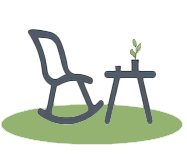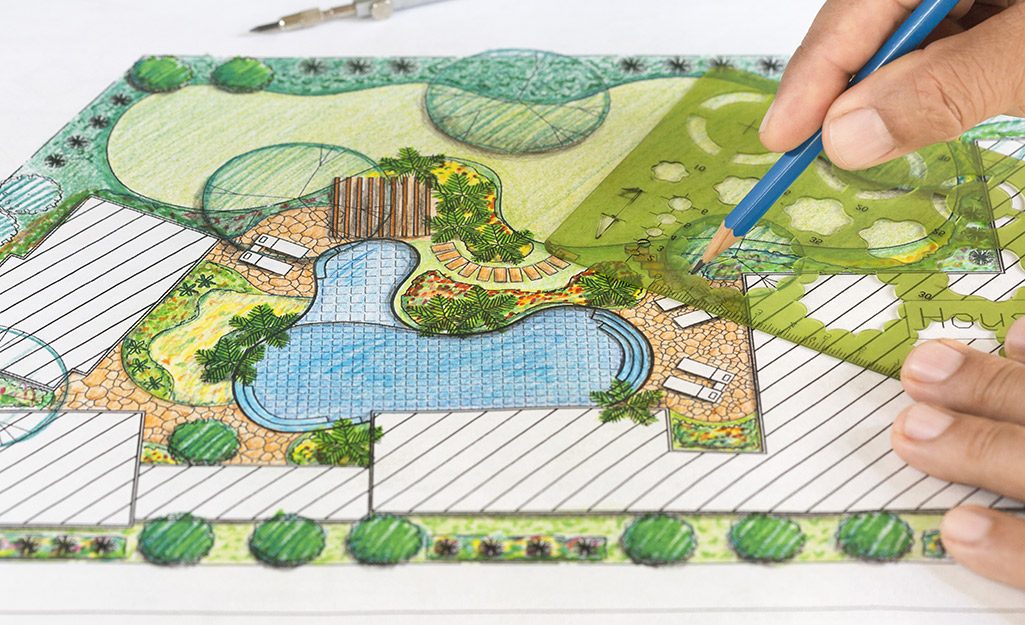To design a backyard landscape plan, assess your space and identify your needs. Develop a layout that maximizes both aesthetics and functionality.
Creating a backyard landscape plan can transform your outdoor space into a personal oasis. Start by evaluating the size and shape of your yard. Consider elements like garden beds, patios, and walkways. Think about what you want to achieve, whether it’s a relaxing retreat or a vibrant entertaining area.
Choose plants and materials that suit your climate and soil conditions. Incorporate focal points such as a water feature or a fire pit. Proper planning ensures your backyard is both beautiful and practical, enhancing your enjoyment and property value.
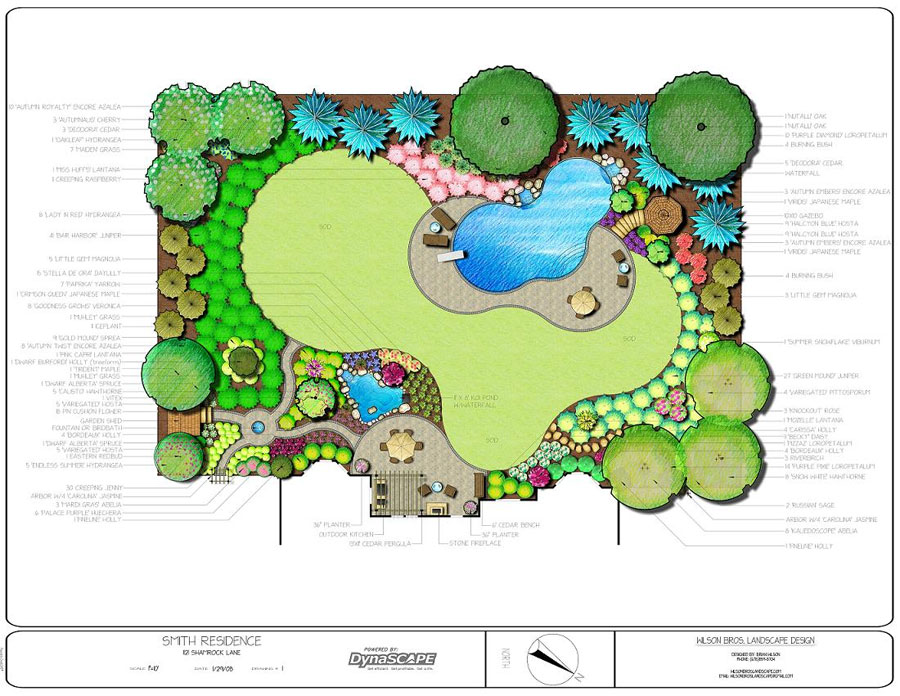
Credit: www.wilsonbroslandscape.com
Assessing Your Space
Before you start designing your backyard, you need to assess your space. This step is crucial. It helps you understand what you have to work with. Let’s break it down into simple steps.
Measuring Dimensions
First, measure your backyard. You need to know the exact size. Use a tape measure for accuracy. Write down the length and width. You can also create a simple sketch. This will help you visualize the space better.
| Measurement | Dimension |
|---|---|
| Length | 30 feet |
| Width | 20 feet |
Identifying Key Features
Next, identify key features in your backyard. These include trees, sheds, and patios. Take note of their positions. This will help you plan around them.
- Trees
- Sheds
- Patios
Also, consider the sun’s path. Note where the sun shines most. This will help you decide where to place plants or seating areas.
- Observe the backyard in the morning.
- Note the sunny and shady spots.
- Repeat the observation in the afternoon.
By assessing your space, you can create a functional and beautiful backyard. Remember to measure accurately and identify all key features. This will set a strong foundation for your landscape plan.
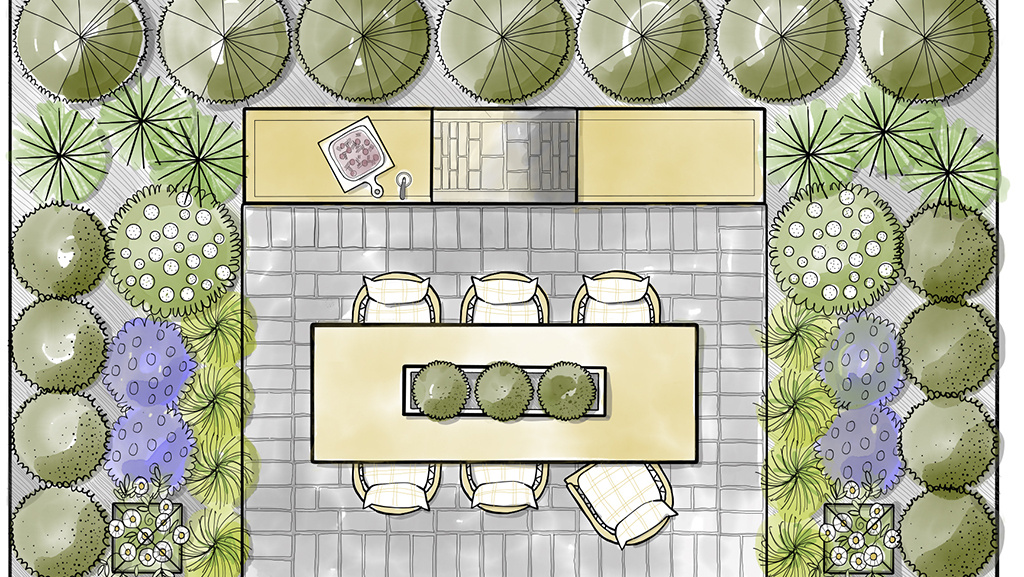
Credit: www.monrovia.com
Setting Goals
Designing a backyard landscape plan begins with setting clear goals. This step helps you create a space that is both functional and beautiful. Your goals will guide every decision, from layout to plant selection. Let’s dive into the essentials of setting goals for your backyard landscape plan.
Functional Areas
First, identify the functional areas you need. Think about how you will use your backyard. Here are some common functional areas:
- Dining Area: For outdoor meals and gatherings.
- Play Area: Safe space for children to play.
- Garden Area: For growing flowers, vegetables, or herbs.
- Relaxation Zone: A quiet place to unwind.
- Storage Area: Space for tools and equipment.
Use a table to organize your ideas:
| Functional Area | Purpose | Requirements |
|---|---|---|
| Dining Area | Outdoor meals | Table, chairs, shade |
| Play Area | Children’s activities | Soft ground, safe equipment |
| Garden Area | Growing plants | Sunlight, soil |
| Relaxation Zone | Unwinding | Comfortable seating, privacy |
| Storage Area | Tools and equipment | Shed, organization |
Aesthetic Preferences
Next, consider your aesthetic preferences. This is about how you want your backyard to look. Here are some elements to think about:
- Color Scheme: Choose colors that you love.
- Plant Types: Select plants that fit your style.
- Materials: Pick materials for paths, patios, and walls.
- Decor: Add personal touches with garden decor.
Creating a mood board can help visualize your ideas. List your aesthetic preferences in order of importance:
- Color Scheme
- Plant Types
- Materials
- Decor
Balancing functionality with aesthetics ensures a harmonious backyard. Combining these elements will make your space both practical and beautiful.
Creating A Budget
Designing a backyard landscape plan involves careful budgeting. It’s crucial to estimate costs and allocate resources wisely. This ensures your project stays on track financially. Let’s dive into the details.
Estimating Costs
Start by listing all potential expenses. These might include:
- Plants and trees
- Soil and mulch
- Tools and equipment
- Labor costs
- Decorative items
- Water features
Use a table to organize these costs:
| Item | Estimated Cost |
|---|---|
| Plants and Trees | $500 |
| Soil and Mulch | $200 |
| Tools and Equipment | $150 |
| Labor Costs | $400 |
| Decorative Items | $250 |
| Water Features | $300 |
Calculate the total estimated cost. This will help you understand the financial requirements.
Allocating Resources
Once costs are estimated, allocate your resources. Prioritize essential items first. These include:
- Plants and Trees
- Soil and Mulch
- Tools and Equipment
Allocate funds for non-essential items next, such as:
- Decorative Items
- Water Features
Remember to set aside a contingency fund. This covers unexpected expenses. Aim to reserve around 10% of your total budget.
Here’s a simple formula:
Total Estimated Cost x 0.10 = Contingency Fund
For instance, if your total estimated cost is $1,800, your contingency fund would be $180.
By following these steps, you’ll create a realistic budget. This ensures your backyard landscape plan is financially feasible.
Choosing Plants
Choosing the right plants for your backyard landscape is crucial. Plants add beauty and life to your outdoor space. They also play roles in the ecosystem. This section will guide you through selecting plants for your backyard landscape.
Climate Considerations
Your local climate affects which plants will thrive in your backyard. Check the USDA Plant Hardiness Zone Map. This map will help you find the best plants for your area. Plants are classified into zones based on their ability to withstand cold temperatures.
Also, consider the amount of sunlight your backyard receives. Some plants love full sun. Others prefer partial shade. Use these factors to narrow down your plant choices.
Maintenance Levels
Different plants require different levels of care. Some plants need regular watering and pruning. Others are low-maintenance and easy to care for.
Here is a table to help you understand the maintenance levels of common plants:
| Plant Type | Watering Needs | Pruning Needs |
|---|---|---|
| Succulents | Low | Low |
| Roses | Medium | High |
| Ferns | High | Low |
Choose plants that match your desired maintenance level. If you have little time for gardening, opt for low-maintenance plants. These plants will save you time and effort.
Incorporating Hardscaping
Creating a balanced backyard landscape involves more than just plants and flowers. Hardscaping adds structure and functionality to your outdoor space. It includes elements like pathways, patios, walls, and fences. These features provide a cohesive look and practical use of your yard.
Pathways And Patios
Pathways guide visitors through your garden, making it easy to explore. They can be made from stones, bricks, or concrete. Patios offer a space to relax and entertain guests. They can be simple or elaborate, depending on your design.
- Materials: Choose durable materials like stone or brick.
- Design: Keep the design simple for easy navigation.
- Maintenance: Use materials that require low upkeep.
Walls And Fences
Walls and fences provide privacy and structure in your backyard. They can be made from wood, stone, or metal. These features help define spaces and add a sense of security.
| Type | Material | Benefits |
|---|---|---|
| Walls | Stone, Brick | Privacy, Structure |
| Fences | Wood, Metal | Security, Aesthetics |
By incorporating hardscaping into your backyard, you create a beautiful and functional space. Make sure to choose the right materials and designs for your needs.
Adding Water Features
Adding water features can transform your backyard into a serene oasis. Water features add visual interest and a calming ambiance. They also attract birds and other wildlife, enhancing your outdoor experience. Whether you choose a fountain, pond, or stream, each element adds unique charm and value.
Fountains
Fountains are a popular choice for backyard landscapes. They are easy to maintain and install. Fountains come in various sizes and styles, fitting any garden theme.
Here are some benefits of adding a fountain:
- Creates soothing sounds
- Enhances aesthetic appeal
- Attracts birds and butterflies
- Improves air quality
Place your fountain in a central spot for maximum impact. Ensure you have a power source nearby. Solar-powered fountains are also a great eco-friendly option.
Ponds And Streams
Ponds and streams add a natural feel to your backyard. They are perfect for larger spaces and can be home to fish and aquatic plants.
Consider these tips when planning a pond or stream:
- Choose a location with partial sunlight.
- Ensure proper water circulation to avoid stagnation.
- Use natural stones to create a realistic look.
- Add aquatic plants for a balanced ecosystem.
- Consider adding a small waterfall for visual interest.
Ponds and streams require more maintenance but offer unmatched beauty. They provide a habitat for wildlife and create a peaceful retreat.
| Feature | Benefits |
|---|---|
| Fountain | Easy to install, soothing sounds, attracts birds |
| Pond | Natural look, supports fish and plants, relaxing |
| Stream | Dynamic water flow, natural feel, habitat for wildlife |
Adding water features elevates your backyard’s charm. They provide tranquility and a connection to nature. Choose the right water feature to suit your space and enjoy your outdoor haven.
Lighting Design
Designing a backyard landscape plan involves many elements. One crucial aspect is lighting design. Proper lighting can transform your outdoor space. It adds beauty and functionality. Let’s explore two main types of lighting: Ambient Lighting and Security Lighting.
Ambient Lighting
Ambient lighting sets the mood in your backyard. It provides soft, general illumination. This lighting is perfect for evening gatherings.
- String Lights: Hang string lights around the patio or trees.
- Lanterns: Place lanterns on tables or pathways.
- LED Strips: Use LED strips under railings or steps.
Choose energy-efficient bulbs for long-lasting lighting. Opt for warm colors to create a cozy atmosphere. Ensure fixtures are weather-resistant for outdoor use.
Security Lighting
Security lighting ensures safety in your backyard. It deters intruders and illuminates dark areas.
- Motion Sensor Lights: Install these near entry points.
- Floodlights: Place floodlights to cover large areas.
- Pathway Lights: Line pathways with lights for safe walking.
Use bright, white lights for security purposes. Position lights high for maximum coverage. Regularly check and maintain all fixtures.
| Type | Purpose | Example |
|---|---|---|
| Ambient Lighting | Set the mood | String Lights |
| Security Lighting | Ensure safety | Motion Sensor Lights |
Lighting design enhances your backyard’s appeal and security. Plan your lighting thoughtfully for the best results.
Sustainable Practices
Designing a backyard landscape plan with sustainable practices helps the environment. It also reduces maintenance costs. Focus on water conservation and using native plants. These practices can create a beautiful and eco-friendly backyard.
Water Conservation
Water is a precious resource. Conserving it should be a priority in your backyard landscape plan. Use the following tips to reduce water usage:
- Install a drip irrigation system to water plants slowly and directly at the roots.
- Use mulch to retain soil moisture and reduce evaporation.
- Choose drought-tolerant plants that need less water.
- Collect and use rainwater for your garden.
These methods help save water and keep your garden healthy.
Native Plants
Native plants are well-suited to your local climate. They need less water and care. Here are some benefits of using native plants:
| Benefits | Explanation |
|---|---|
| Low Maintenance | Native plants grow naturally without extra care. |
| Water Efficiency | They require less water compared to non-native plants. |
| Wildlife Support | They provide food and shelter for local wildlife. |
Using native plants creates a balanced ecosystem in your backyard. It also supports local wildlife and reduces the need for fertilizers and pesticides.
Incorporate these sustainable practices into your backyard landscape plan. This approach helps protect the environment. It also creates a beautiful and sustainable outdoor space.
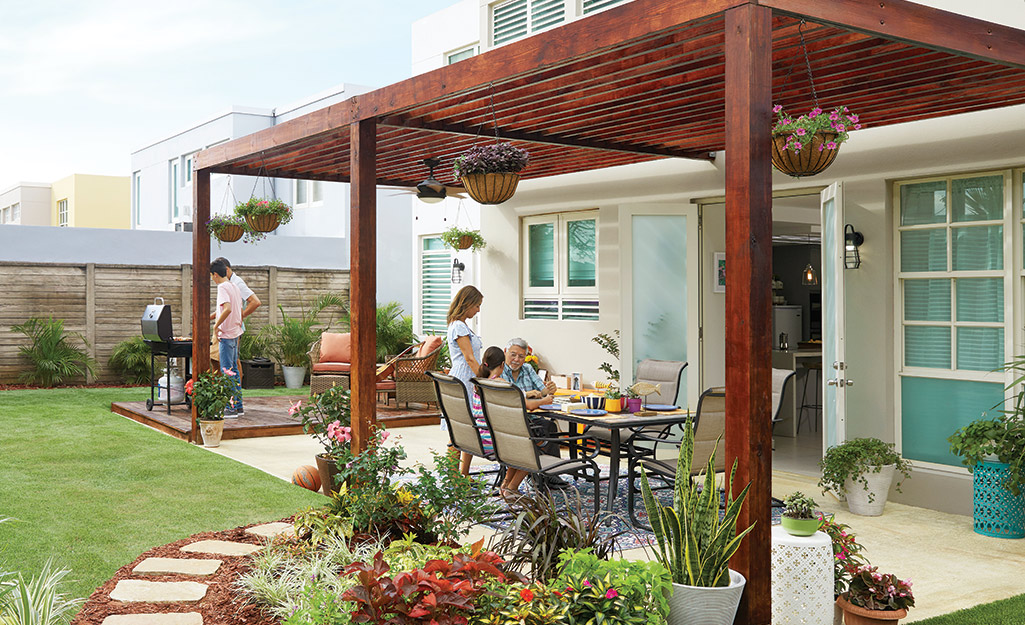
Credit: www.homedepot.com
Frequently Asked Questions
How Do I Plan My Backyard Layout?
Start by measuring your space. Sketch a layout including zones for seating, dining, and gardening. Choose suitable plants and furniture. Ensure pathways are clear and consider lighting for evening use.
How Do You Design A Simple Landscape Plan Step By Step?
Start with a site analysis. Sketch a rough layout. Choose plants and materials. Plan pathways and focal points. Finalize and review.
What Are The 7 Steps To Landscape Design?
The 7 steps to landscape design are: site analysis, needs assessment, functional diagrams, concept development, design creation, plant selection, and implementation.
Is There An App To Design Your Yard?
Yes, apps like iScape and Yardzen help design your yard. They offer tools for planning and visualizing your space.
Conclusion
Designing a backyard landscape plan can transform your outdoor space into a personal oasis. Use these tips to create a functional and beautiful garden. Remember to consider factors like climate, soil, and available space. With proper planning, your backyard will become a serene retreat, perfect for relaxation and entertaining.
